Abstract
Brown's book is selectively reviewed with the aim of noting points of similarity between Brown's psycholinguistic analysis of language acquisition and a functional analysis of verbal behavior. Brown divides early language acquisition into five stages, based on mean length of utterance in samples of child speech. His book concentrates on Stage I, when mean length of utterance first rises above 1.0, indicating that children are beginning to speak in multi-morphemic utterances, and Stage II, when mean length of utterance in morphemes is about 2.25. Multi-morphemic utterances in Stage I consist mainly of ordered sequences of uninflected nouns and verbs, the order being that of the simple declarative sentence (agent-action-indirect object-direct object-locative). The review attempts a theoretical analysis of the functional stimulus control of Stage I syntactic order, concluding that the control must originate partly in relations among events in the environment and partly in covert autoclitic verbal behavior. Increases in mean length of utterance in Stage II are mainly due to the appearance of several “grammatical morphemes” such as the progressive -ing inflection on verbs and the plural -s inflection on nouns. The review attempts a behavioral paraphrase, again in terms of tacts and autoclitics, of Brown's psycholinguistic analysis of grammatical morphemes, concluding that Stage II displays the further development, building on Stage I, of the combined control of verbal behavior by relations in the environment and covert self-generated verbal stimuli. Similarities between Brown's psycholinguistic analysis and a functional analysis of language acquisition suggest that the two viewpoints are converging on a common concern with the stimulus control of verbal behavior.
Full text
PDF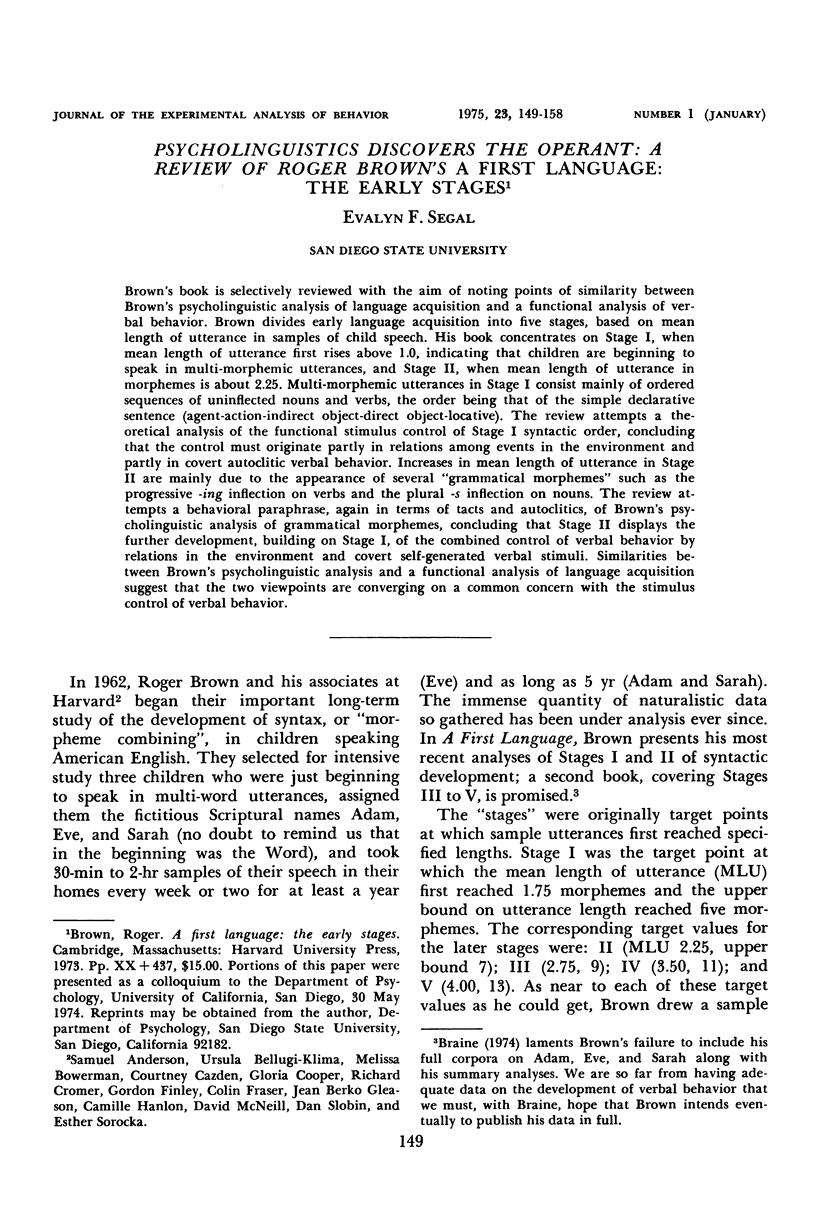

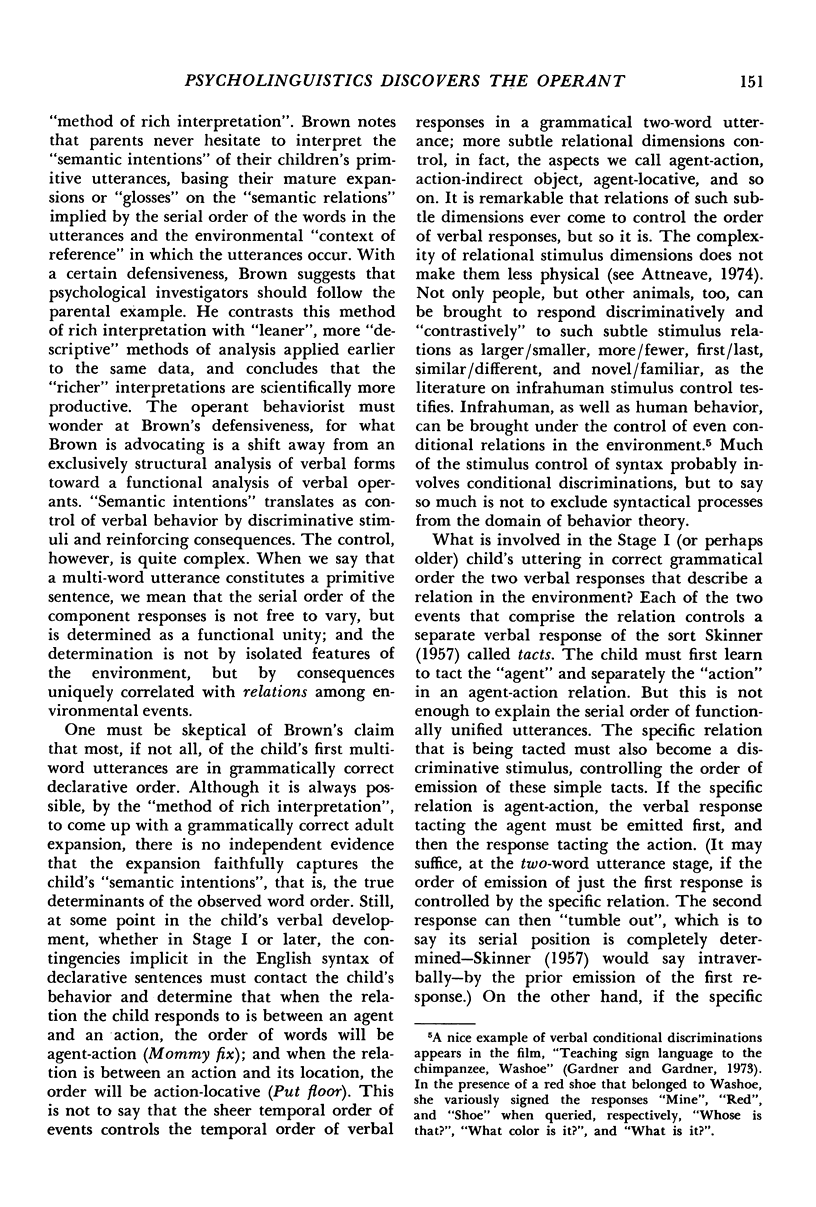
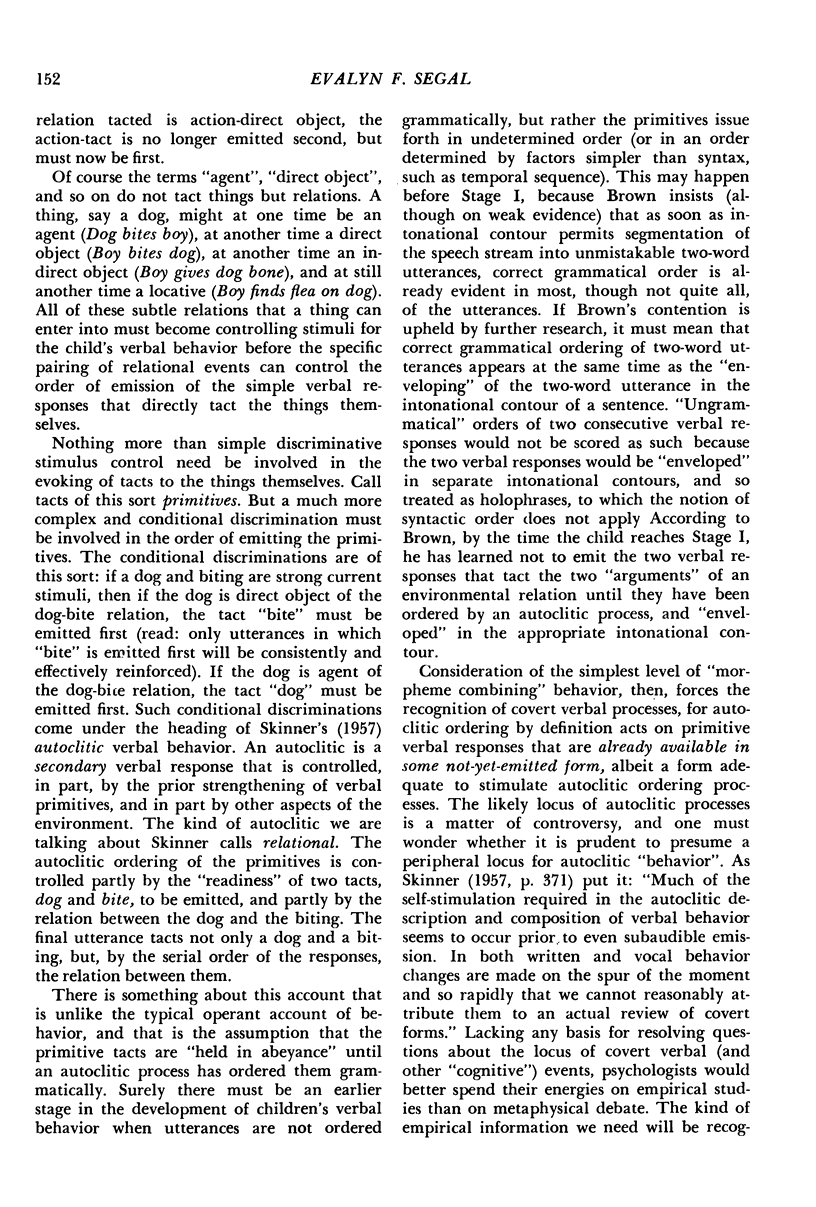
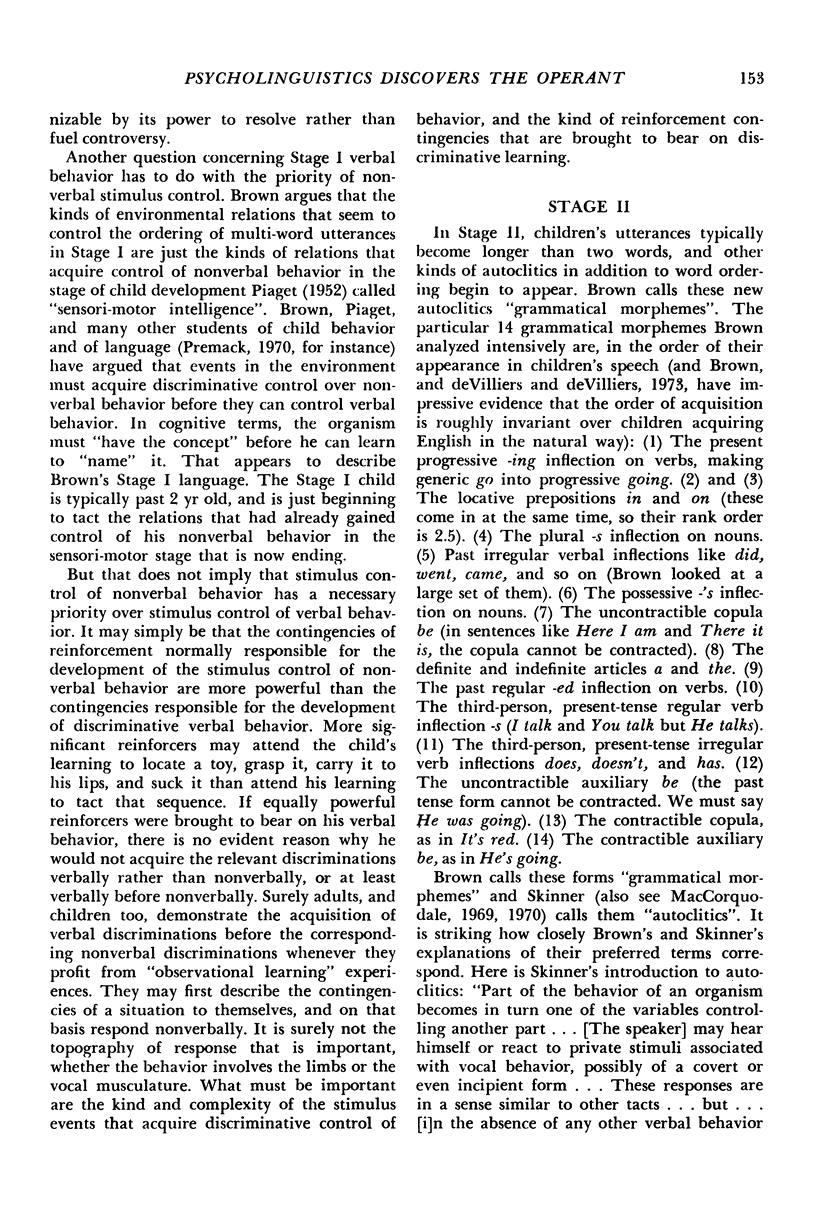
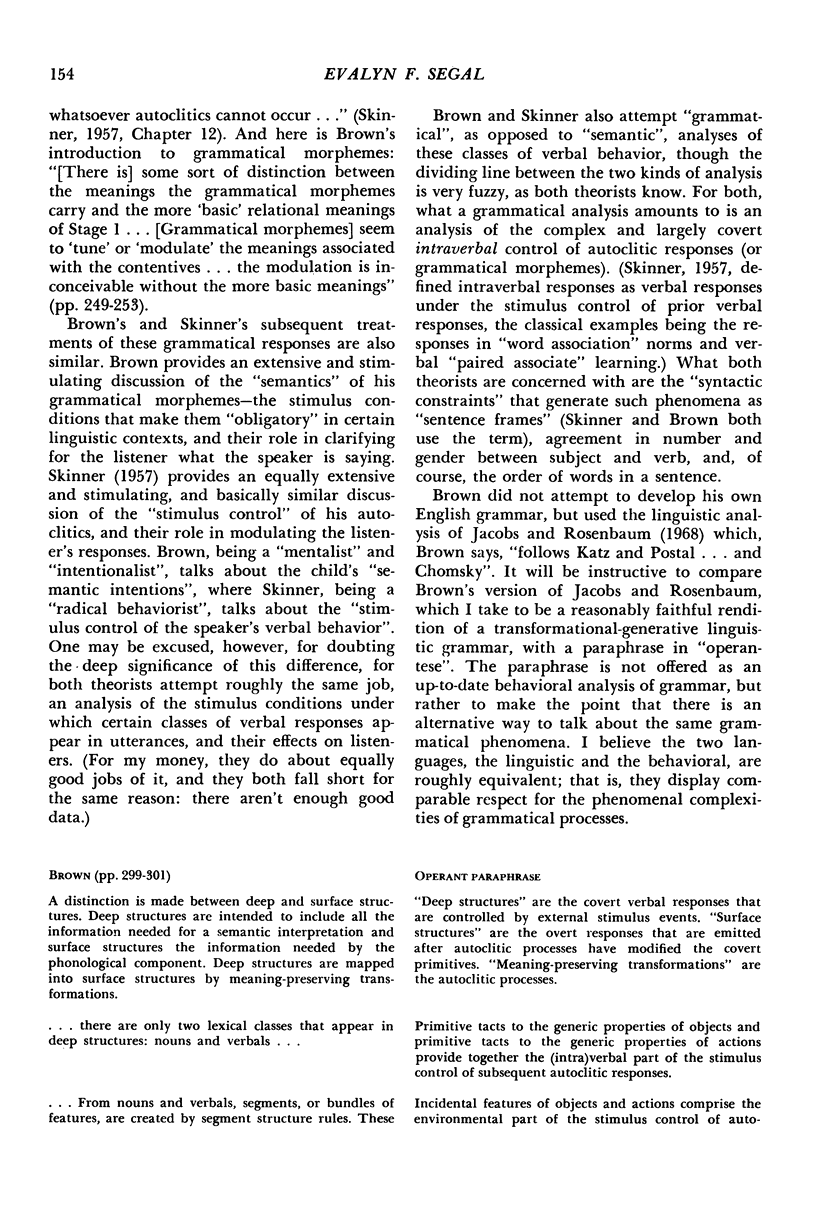
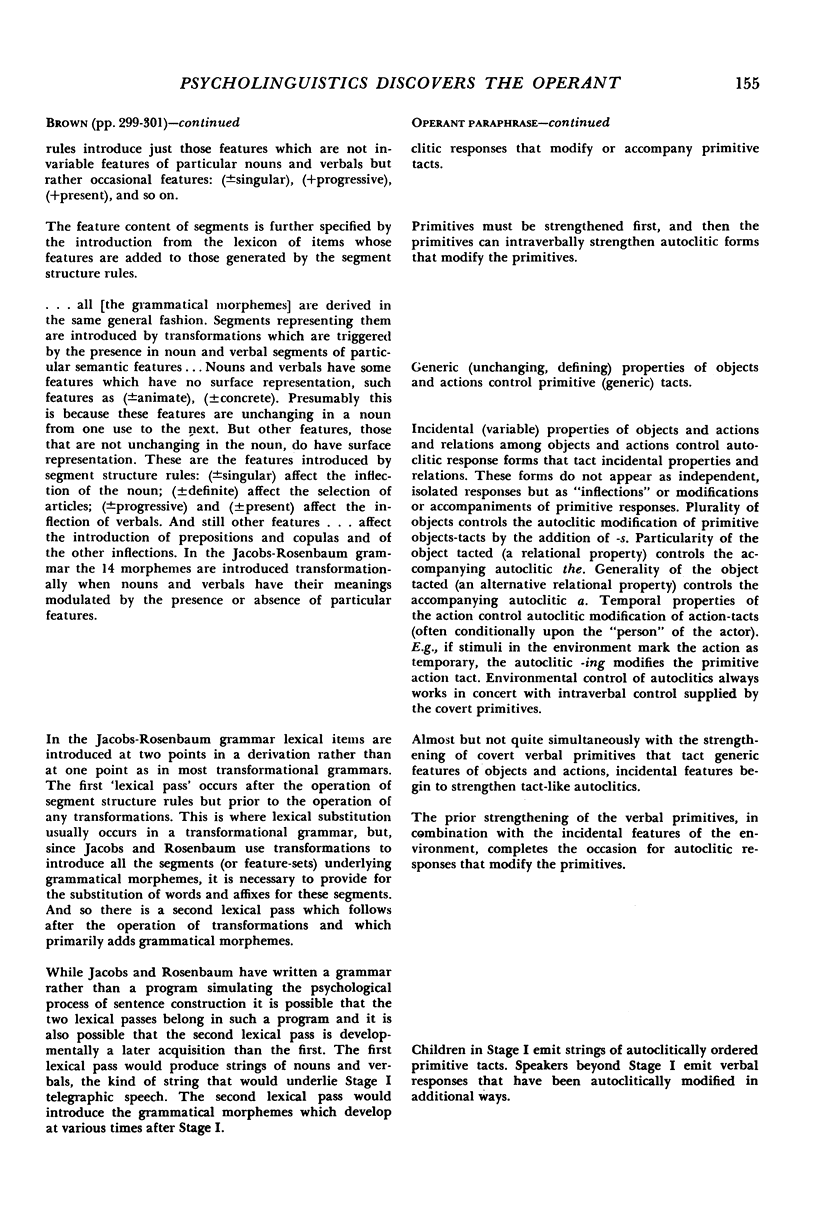
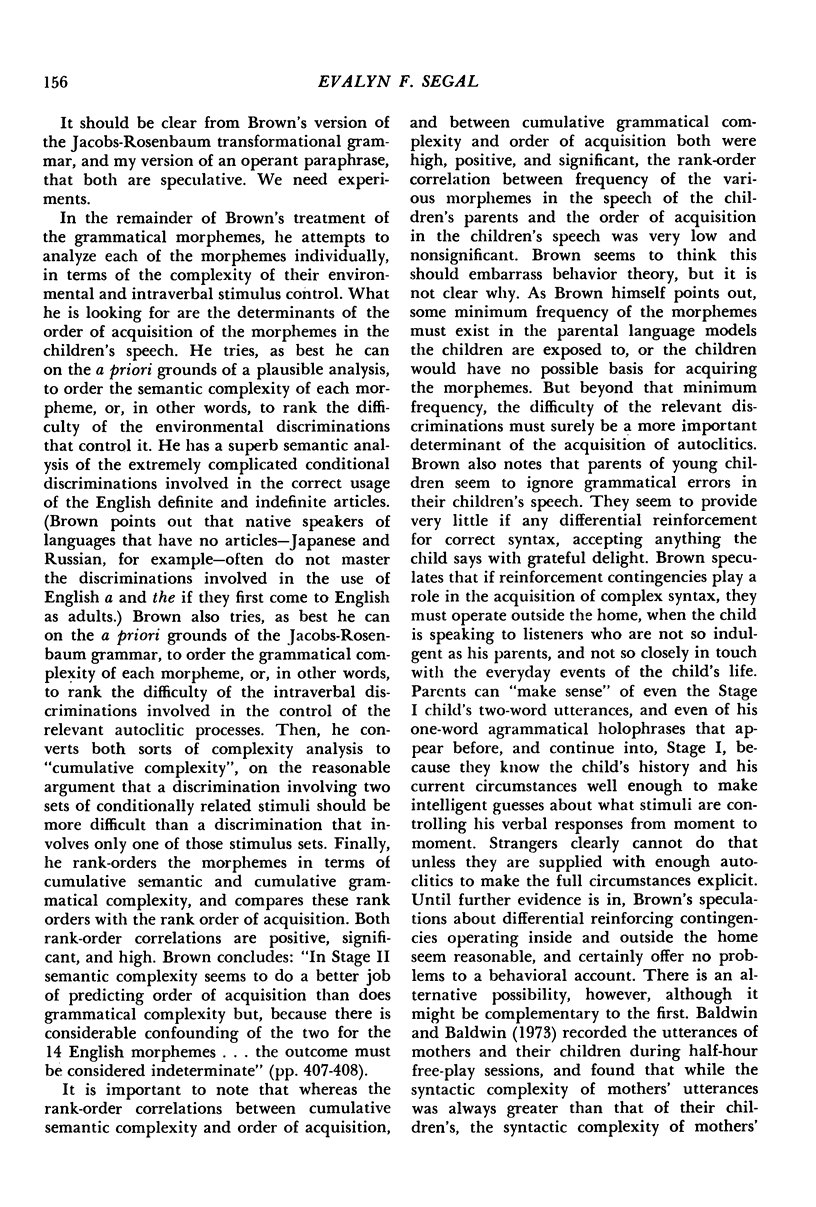

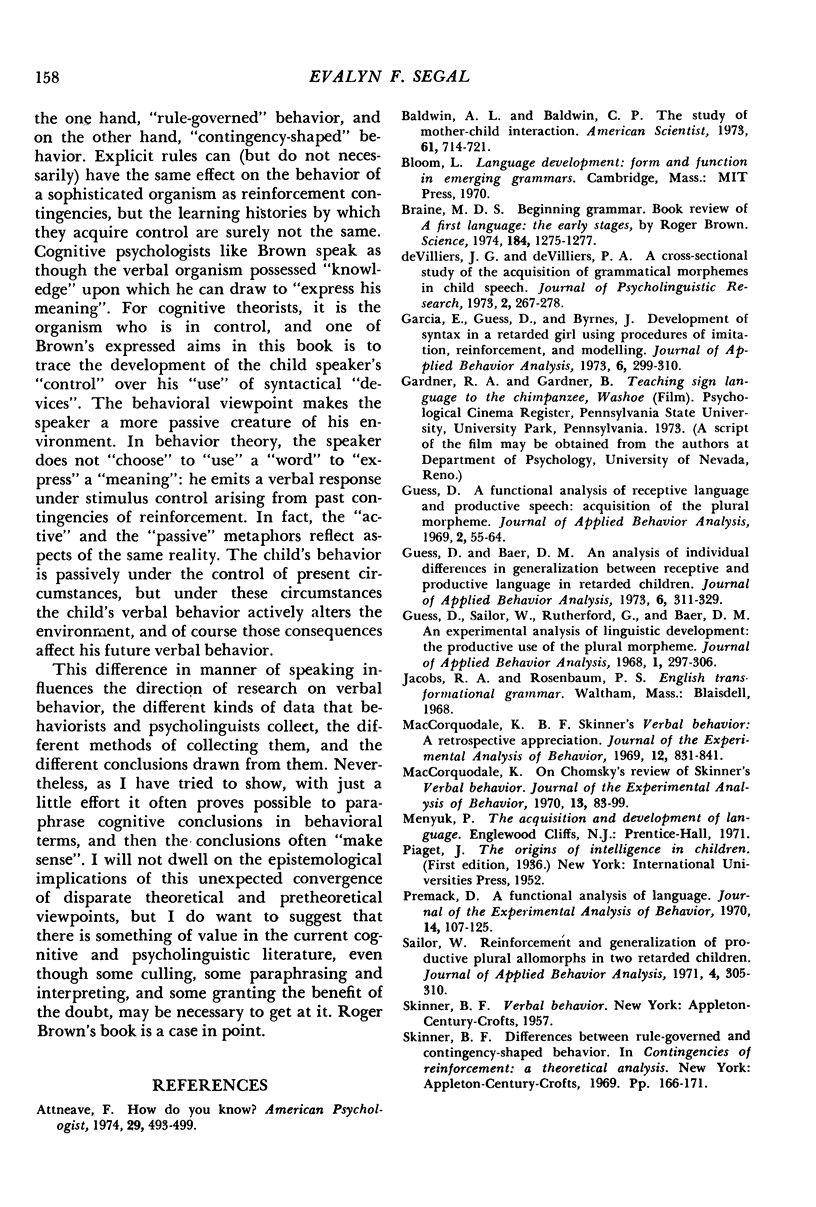
Selected References
These references are in PubMed. This may not be the complete list of references from this article.
- Garcia E., Guess D., Byrnes J. Development of syntax in a retarded girl using procedures of imitation, reinforcement, and modelling. J Appl Behav Anal. 1973 Summer;6(2):299–310. doi: 10.1901/jaba.1973.6-299. [DOI] [PMC free article] [PubMed] [Google Scholar]
- Guess D. A functional analysis of receptive language and productive speech: acquisition of the plural morpheme. J Appl Behav Anal. 1969 Spring;2(1):55–64. doi: 10.1901/jaba.1969.2-55. [DOI] [PMC free article] [PubMed] [Google Scholar]
- Guess D., Baer D. M. An analysis of individual differences in generalization between receptive and productive language in retarded children. J Appl Behav Anal. 1973 Summer;6(2):311–329. doi: 10.1901/jaba.1973.6-311. [DOI] [PMC free article] [PubMed] [Google Scholar]
- Guess D., Sailor W., Rutherford G., Baer D. M. An experimental analysis of linguistic development: the productive use of the plural morpheme. J Appl Behav Anal. 1968 Winter;1(4):297–306. doi: 10.1901/jaba.1968.1-297. [DOI] [PMC free article] [PubMed] [Google Scholar]
- MacCorquodale K. B. F. Skinner's verbal behavior: a retrospective appreciation. J Exp Anal Behav. 1969 Sep;12(5):831–841. doi: 10.1901/jeab.1969.12-831. [DOI] [PMC free article] [PubMed] [Google Scholar]
- doi: 10.1901/jeab.1970.13-83. [DOI] [PMC free article] [Google Scholar]
- Premack D. A functional analysis of language. J Exp Anal Behav. 1970 Jul;14(1):107–125. doi: 10.1901/jeab.1970.14-107. [DOI] [PMC free article] [PubMed] [Google Scholar]
- Sailor W. Reinforcement and generalization of productive plural allomorphs in two retarded children. J Appl Behav Anal. 1971 Winter;4(4):305–310. doi: 10.1901/jaba.1971.4-305. [DOI] [PMC free article] [PubMed] [Google Scholar]


